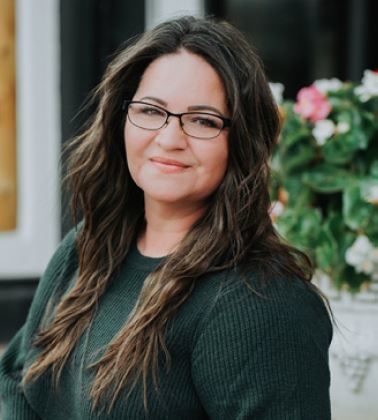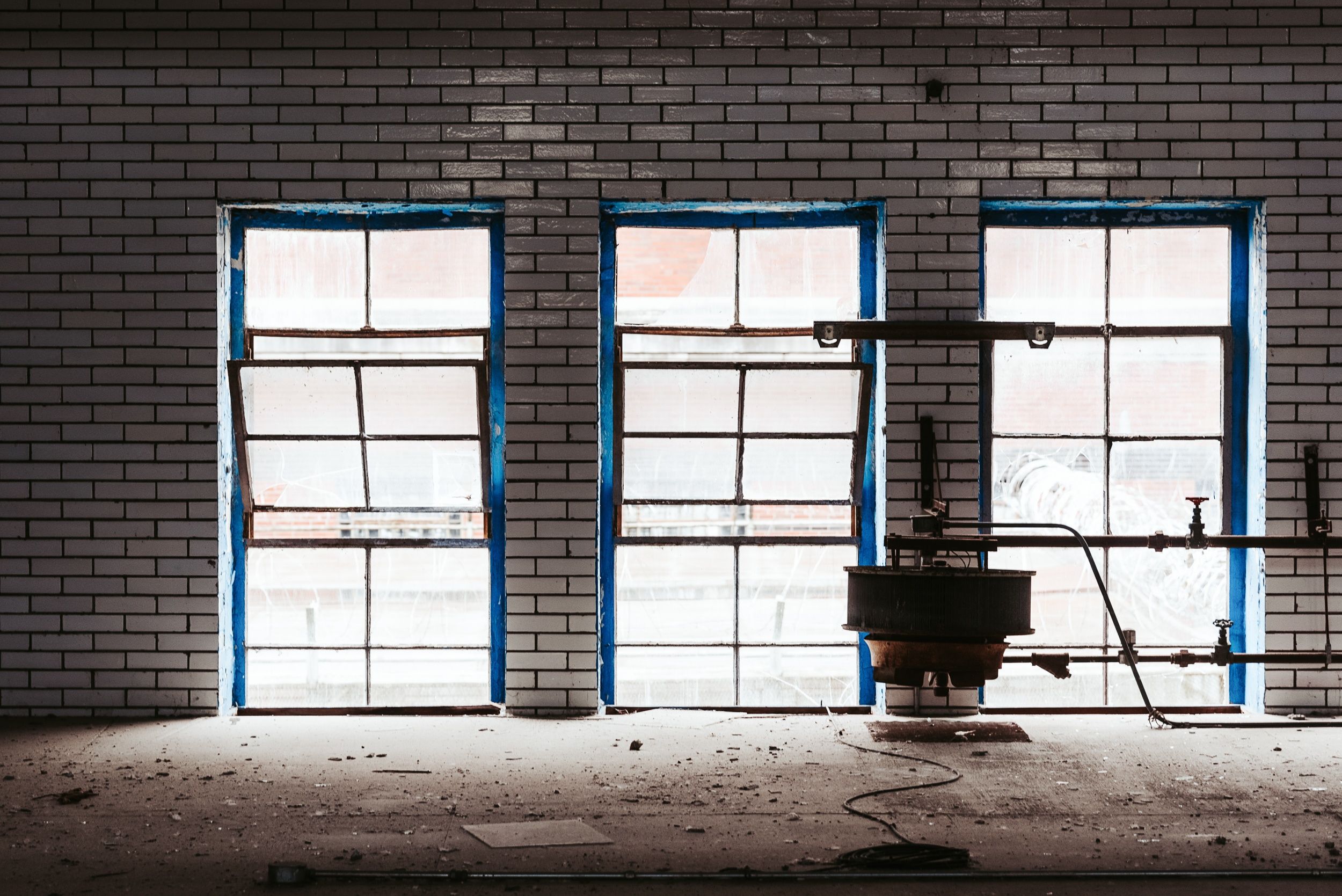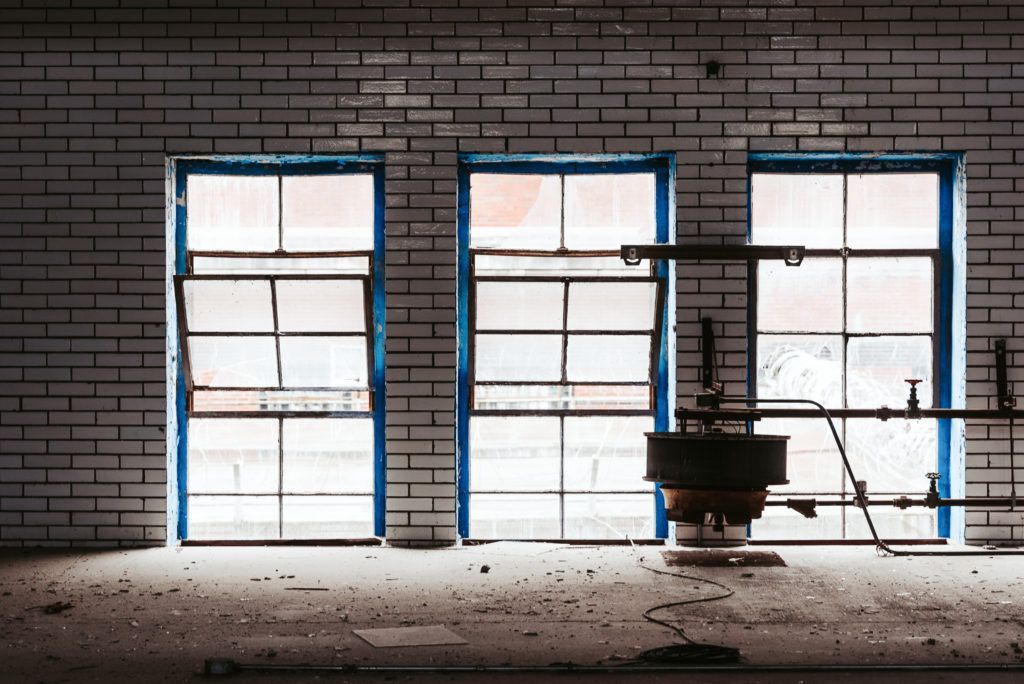Have you ever pressed your face against an old, dirty window to get a peek inside an old building? Perhaps you linger longer than usual in front of that abandoned house on the outskirts of your town? Does the question of what could be inside called you? Are you a photographer looking to expand your skill and creativity? If so, then photographing abandoned buildings may be something to consider.
I first became interested in old buildings as a child. My family visited an old farm homestead in Arkansas while on vacation. We took a tour of the home and barn with various displays of farm equipment, furniture, and various remnants of the farm’s past and from a family who lived there.
I instantly became fascinated by that peek into the past and the rugged, simplistic beauty of a life that I wasn’t familiar with. That same curiosity and fascination have lured me into countless antique stores, historic buildings, and tours, and now, into abandoned homes and buildings.
I am a photographer who loves all things old and filled with history and I have been photographing abandoned buildings and historic places for about five years. We will discuss some tips I’ve learned over the past few years to make the most out of my photography outings to abandoned buildings and hopefully inspire some explorations of your own.
We will discuss the following:
- Legal implications
- Safety precautions
- Gear
- Deciding what to photograph in abandoned buildings and how to photograph it
- Alternatives to entering abandoned buildings
- Post-processing tips
Recommended Reading: Want to expand your shooting skills and master photography? Grab our set of 65 beautifully designed and printable Action Cards that will give you over 200 photography assignments to help you take your photography to the next level. Check it out here.
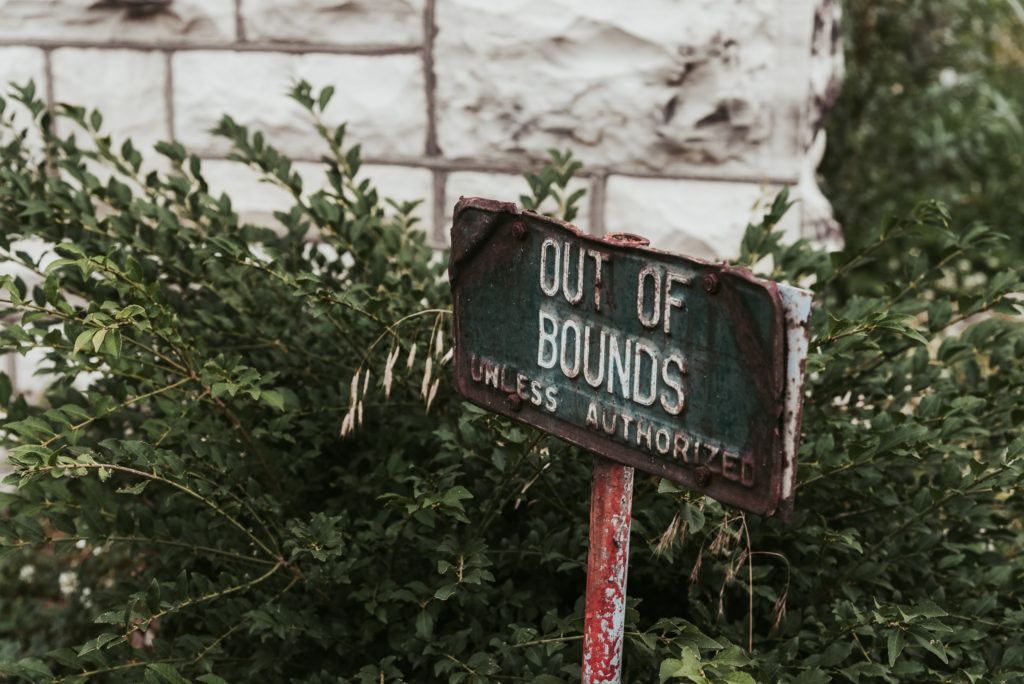
Out of bounds sign outside of the gas chamber of the now decommissioned Missouri State Penitentiary. Photograph by Angela Fulks
An important and necessary decision to make is how comfortable you are with trespassing. It is, after all, illegal. Decide early on if it’s a risk you are willing to take and know the laws concerning it. A simple internet search should tell you all you need to know about the legal implications. Whatever you decide, caution and care should always be the highest priority regarding trespassing.
Key Lesson: Know the laws regarding entry into abandoned buildings. Caution and care are your number one priority. You can use the internet to locate local laws regarding trespassing or visiting abandoned locations.
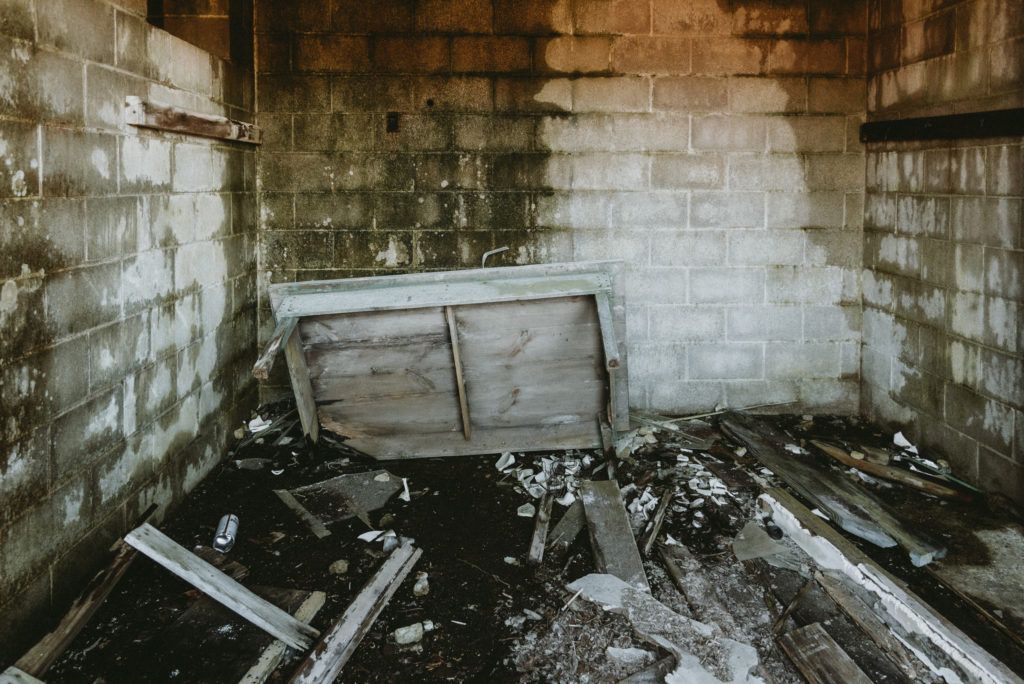
Upon entering an abandoned school gymnasium, we encountered this room, right next to the shower room, with broken wood and layers of grime all over the floor. Trying to walk through this room with improper footwear or an arm full of photography gear would’ve been extremely difficult. Photograph by Angela Fulks
Safety should always be a high priority when entering abandoned buildings and there are some simple and easy precautions you can take.
Most abandoned buildings will have numerous hazards that can harm anyone entering carelessly.
Closed-toe, protective, and sturdy footwear is a must. You will more than likely encounter broken windows, busted glass, rusty nails sticking out of fallen wooden beams, sharp pieces of metal, and in some buildings, stagnant water puddles or chemical spills.
Take extra care when walking around.
There may be soft or weak spots on the floor or areas where the floor has fallen through, leaving dangerous holes.
It’s always a good idea to bring a flashlight. Light can be scarce in some buildings and it may be necessary to illuminate your surroundings.
Key Lesson: Watch your step! Nails and broken glass are common obstructions in an abandoned building. Good footwear is a must! Walk slowly and methodically as you test the flooring you’re about to step onto.
I would advise against entering an abandoned building alone and always have someone else with you. Always keep in mind that the possibility of squatters or people using the building for personal use is very real. Use care upon entering and listen and look for signs of other people occupying that space to avoid a startling, awkward, or dangerous encounter.
Key Lesson: Personal safety is a requirement for this genre of photography. Never enter an abandoned building alone. Make this a group photo walk or at least have someone else with you. Be careful. Listen for other people or animals that are also in the building with you.
Deciding what gear to use to photograph is always an important part of any photography outing, especially when lighting and structural conditions can vary and be impossible to guess.
I have learned that bringing as little gear as possible works best for me.
I bring one camera body with one zoom lens that I know can handle most lighting situations and photographs well in roomy and tight spaces.
I have learned that bringing as little gear as possible works best for me.
I leave the tripod and camera bags at home, preferring not to be bogged down by carrying too much from room to room. Should a longer exposure be needed to get the shot, I find I can typically find something to set my camera on to achieve this.
I will typically have my external flash on my camera but will not use it in most situations, preferring to capture the natural light coming through the building; however, it can be helpful to have it on standby.
As with any photography situation, use the gear you know best and are most comfortable with. It may be necessary to experiment with different lenses and equipment in your arsenal until you find what works best for you.
Key Lesson: Travel light. This is one genre of photography where you don’t want to haul tons of gear. Leave the tripod in the car.
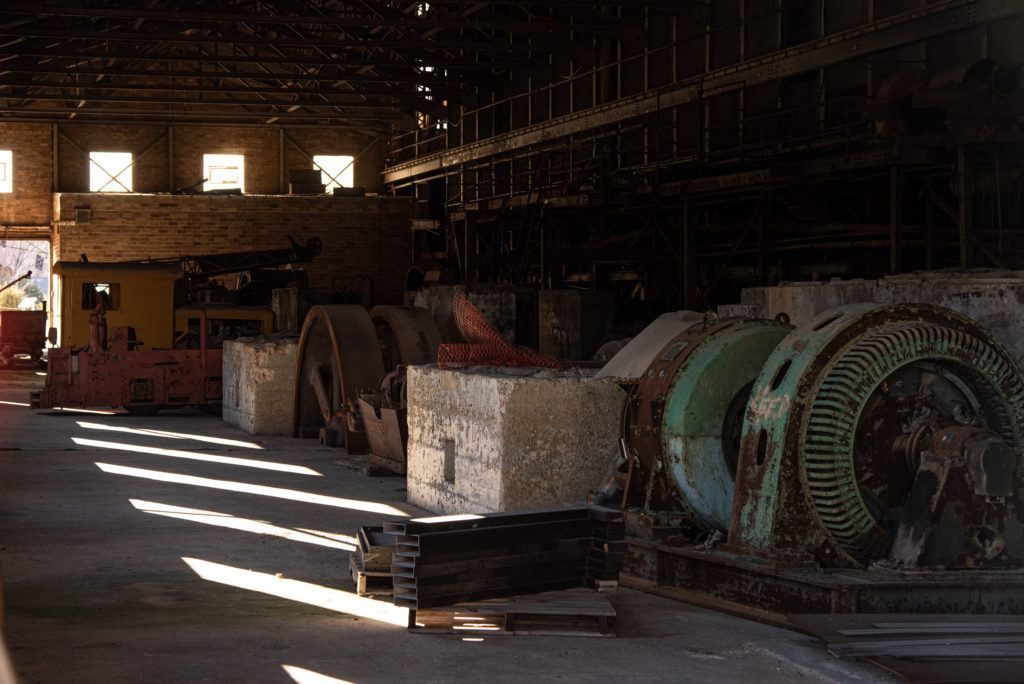
The light coming in through the windows of an old factory at an old lead mine, highlighting various mining equipment. Photograph by Angela Fulks
I believe that every building, especially the old and abandoned, has a story to tell.
Spend some time thinking of where your interest lies in your telling of this story. What draws you to these places? What part of their story resonates with you as a photographer? Are you interested in capturing the whispers of memories, the belongings left behind of those who previously occupied the space? Perhaps it’s the characteristics and structural components of the building itself that interests you. Maybe it’s the stark contrast of the decay of the manmade falling prey to the reclamation of nature.
For me, it’s the beauty that can be found amid the decay, the different textures and shapes and colors collapsing into one another, and the light pouring in through broken windows and collapsing roofs that illuminates the dark and forgotten corners.
Graffiti can be plentiful in abandoned places and can be used in photographs to highlight the demise of the building. Abandoned buildings are the perfect place to stretch your imagination and creativity as a photographer, to take risks with your photography, and to experiment with new angles, compositions, or even camera settings you may not always use.
Composing the perfect shot is not always possible in abandoned buildings and you can use this to your advantage to break out of shooting habits and practices to expand your knowledge and techniques as a photographer. Perhaps focus on creating a photo series, capturing wide shots from the outside of the building down to the little details inside that tell a complete story.
Key Lesson: The options of telling a building’s story can be endlessly fun and challenging! An abandoned location is a terrific place to “shoot how it feels” and let your creativity run wild.
Recommended Reading: Want to expand your shooting skills and master photography? Grab our set of 65 beautifully designed and printable Action Cards that will give you over 200 photography assignments to help you take your photography to the next level. Check it out here.
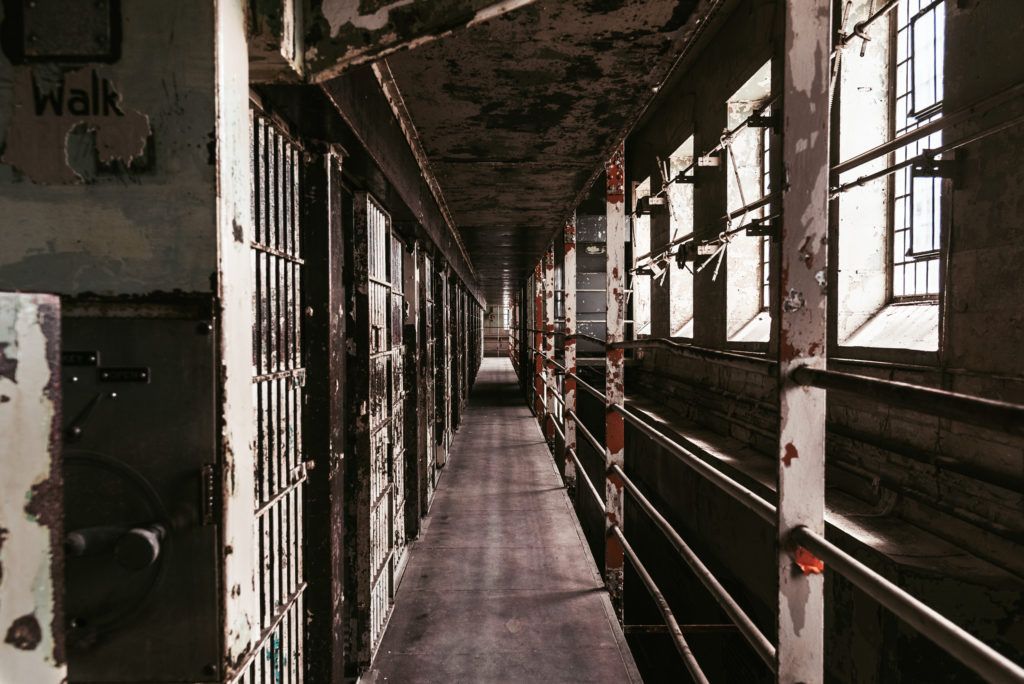
A photo from inside the decommissioned penitentiary during a photography tour. Tour sizes were limited, and it was easy to wander around and take photos at my leisure. Photograph by Angela Fulks
If you aren’t quite ready or willing to enter an abandoned building, there are some good alternatives to still come away with great photos.
A favorite alternative of mine is to visit places that are not being used for their original purpose but still operate tours to showcase the history.
Your local area may have a variety of places to choose from, such as old prisons, mines, historic homes, hotels, or caves. You can still capture days gone by, the beauty in the disrepair, and do it safely and legally. These places can be a fantastic alternative.
A few other alternatives for photographers who may want to avoid the implications of trespassing in abandoned buildings are photographing the exterior of the building from your vehicle or street or getting as close to the building as your comfort permits and shooting through any open doors or windows.
Don’t be afraid to do a little research and see who may be available to simply ask for permission. This may include local law enforcement or tracking down the owner of the property through records held in city hall. It may be a little uncomfortable at first, but simply being able to explain why you’d like to have permission to enter could be an easy solution to trespassing.
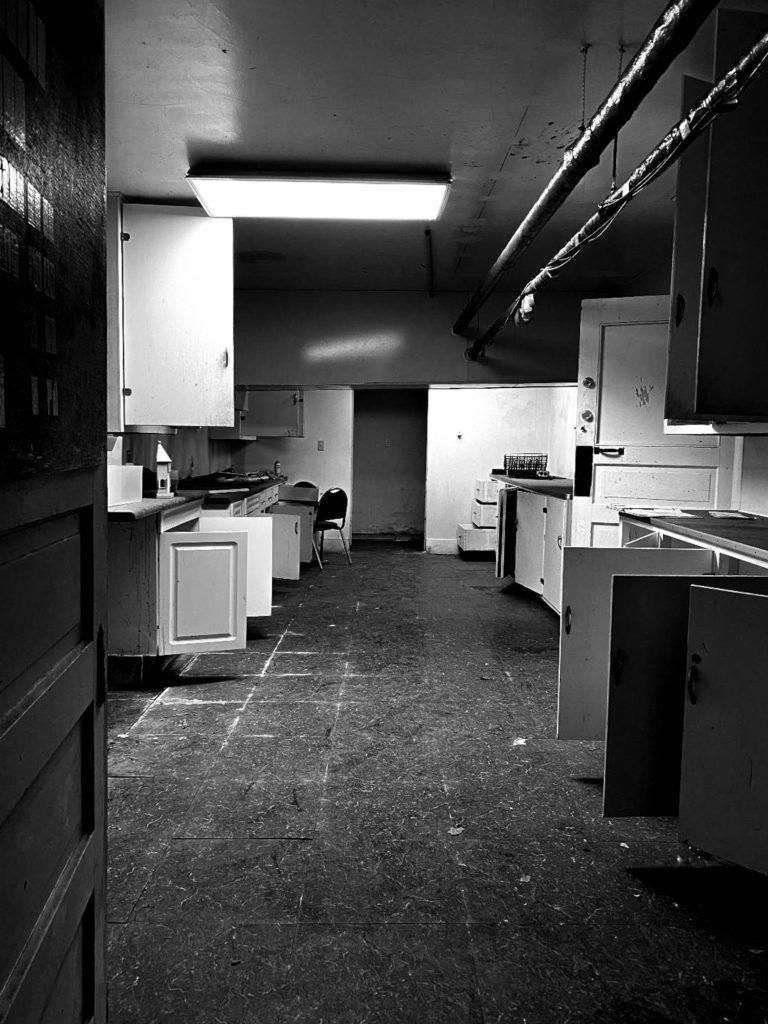
Going into this basement kitchen of an abandoned church was creepy there was just something unsettling about all of the cabinets and drawers being opened. To convey that creepy feeling, I chose to edit this photo in black and white. Photograph by Angela Fulks
Editing techniques in post-processing are unique to every photographer.
While it’s not necessary to edit photos in post-processing, it can certainly be an effective way to put the finishing touches on a certain mood or feel that you may want to convey in your photos.
I do typically edit my photos using Adobe Lightroom for post-processing.
Editing techniques in post-processing is unique to every photographer.
Editing in Lightroom gives me enough control over my photos to achieve the look and feel to be happy with my final image.
I am careful not to over-edit my photos from abandoned locations. I try to keep them as real to life as possible while giving them a little “oomph.”
Adjusting the exposure, clarity, texture, and white balances and temperature of a photo is usually all I need to put the polish on a photo.
Post-processing is a great way to experiment with different editing styles, presets, filters, or saturation levels. Black and white edits work well with photos of abandoned buildings as well as edits with some extra grain for a gritty feel. Don’t be afraid to experiment and have fun!
Key Lesson: Post-processing can add an extra dimension of grittiness and mood to a photo of an abandoned place. Try not to overdo it and let the image speak for itself.
Conclusion
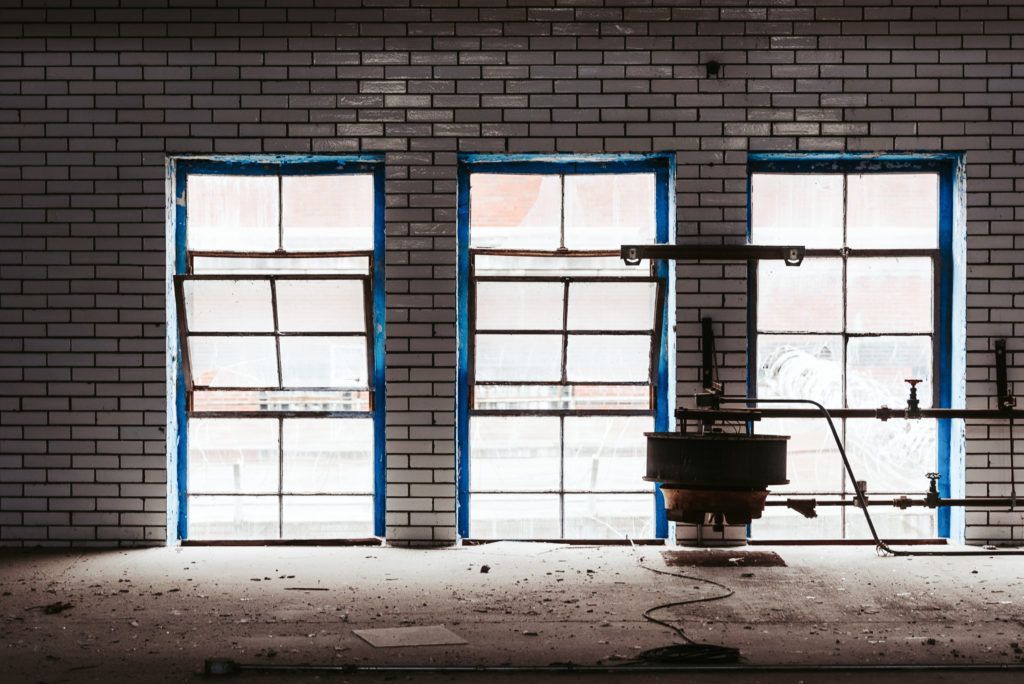
Photograph by Angela Fulks
There are so many things to discover in abandoned places and just as many ways to photograph them, regardless of your photography skills. You never know, you may just be the last person to capture the beauty of the abandoned before it’s gone forever.
Self-Check Quiz:
- True or False: It’s never a problem to enter an abandoned building because no one owns it or cares about it.
- Why should you wear good footwear?
- Is it safe to walk fast so that you get in and out quickly?
- Why should you never enter and abandoned building alone?
- True or False: You should always carry your tripod as there may be low light.
- Write down three reasons why you would like to photograph abandoned spaces.
- True or False: There are no alternatives to trespassing in this genre of photography.
- True or False: You should never do any post-processing to an abandoned place photo because it ruins the historical aspect of the shot.

